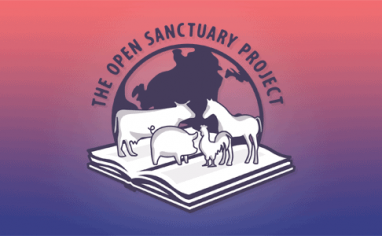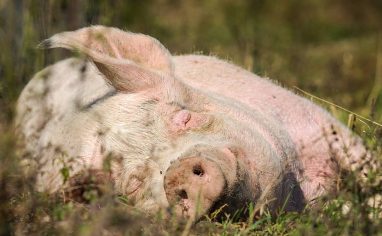
Subscribe To The Open Sanctuary Podcast
If you’d like to get the latest episodes of The Open Sanctuary Podcast, you can subscribe for free on all Podcast platforms, including Apple Podcasts and Spotify!
Episode Notes
In this episode of The Open Sanctuary Podcast, Community Education Specialist Andie Springirth welcomes back special guest and Open Sanctuary Project contributor Dr. Emily Tronetti to discuss the importance of fostering farmed animalA species or specific breed of animal that is raised by humans for the use of their bodies or what comes from their bodies. agency in sanctuary education. In addition to exploring why agency-centered education is so vital to the well-being of sanctuary residents, this episode also highlights some of the inherent challenges sanctuary educators face as they strive to center resident agency and offers some practical tips to navigate them.
—
This Episode’s Referenced Open Sanctuary Project Resources:
- A Guide to Fostering Farmed Animal Agency in Sanctuary Education
- A Guide to Fostering Farmed Animal Agency in Sanctuary Education: Asking Other Animals for Consent Handout
- A Guide to Fostering Farmed Animal Agency in Sanctuary Education: Reflection Workbook
- A Guide to Fostering Farmed Animal Agency in Sanctuary Education: Part One
- A Guide to Fostering Farmed Animal Agency in Sanctuary Education: Part Two
- A Guide to Fostering Farmed Animal Agency in Sanctuary Education: Part Three
- A Guide to Fostering Farmed Animal Agency in Sanctuary Education: Part Four
- A Guide to Fostering Farmed Animal Agency in Sanctuary Education: Part Five
- A Guide to Fostering Farmed Animal Agency in Sanctuary Education: Part Six
- An Introduction To Fostering Agency In Farmed Animals At Your Animal Sanctuary
- Fostering Critical Thinking at Your Animal Sanctuary
- Fostering Empathy Towards Farmed Animals
- Understanding Biases that Can Negatively Impact Farmed Animals and How to Help Folks Overcome Them
- An Introduction to Educational Programs and Opportunities Well-suited for Microsanctuaries
- In-Person Sanctuary Educational Programming: What Are Your Options?
- Virtual Sanctuary Educational Programming: What Are Your Options?
Episode Transcript (Auto-GeneratedThe following content was transcribed through an automated process and may contain transcription errors or misspellings.)
Andie Springirth: Hey there friends, and welcome back to another episode of the Open Sanctuary Podcast. My name is Andie. I am the Open Sanctuary Project’s community education specialist. And today I am very excited to have Dr. Emily Tronetti of Coexistence Consulting back for a follow-up episode on our last conversation when we introduced the topic of farmed animal agency. In today’s episode, we are going to talk specifically about the importance of fostering farmed animal agency in sanctuary education. So, if you haven’t already listened to episode number 27, we encourage you to do that first and then take a listen to this episode. But thank you so much for being on the podcast again, Emily. It is so nice to have you back.
Dr. Emily Tronetti: Thank you. I am so glad to do that.
Andie Springirth: So, a few months ago, we released a very comprehensive guide to fostering farmed animal agency in sanctuary education that Emily originally developed for the OSP as part of her dissertation project in pursuance of her doctor of education through Antioch University and the Institute for Human Education. Folks, if you have not seen this guide yet, please, please check it out on our website. I am of course going to link to it in our show notes, but it is a truly game-changing and absolutely beautiful resource for sanctuaries that facilitate educational programs, specifically ones with on-site visitor programs. But in the meantime, you can of course listen to this episode and the few subsequent episodes as we begin to discuss this incredibly important topic. So, if education outreachAn activity or campaign to share information with the public or a specific group. Typically used in reference to an organization’s efforts to share their mission. are part of your sanctuary’s missionThe stated goals and activities of an organization. An animal sanctuary’s mission is commonly focused on objectives such as animal rescue and public advocacy. and you are interested in learning why fostering farmed animal agency and educational programming is so important to the overall well-being of your residents, then this episode is for you. I would actually like to start today’s conversation by having Emily take our listeners on a little imaginative journey. Emily wrote this visualization exercise which comes straight from the guide to fostering farmed animal agency in sanctuary education. And I think it is just an incredibly captivating and effective way to set up today’s topic. So, if you would like and are safely able to, you can even close your eyes while she takes us through it. But Emily, would you mind facilitating this exercise with us right now?.
Dr. Emily Tronetti: I would love to. Thank you, Andie. Okay, so imagine that it is a late morning on an early summer day and you are visiting a sanctuary you haven’t yet been to. You signed up for a guided visit and it is just about to get started. You and the other visitors are walking from the parking area to meet the sanctuary’s humane educator outside the visitor center. Not far beyond the center, you see a green rolling pasture with cowsWhile "cows" can be defined to refer exclusively to female cattle, at The Open Sanctuary Project we refer to domesticated cattle of all ages and sexes as "cows." grazing peacefully. You and the other visitors make it to the educator, forming a loose half circle around them. They introduce themselves as Sam. You listen closely as she tells the group about the sanctuary, although you occasionally find yourself getting lost in your admiration of the cows in the distance. Sam informs the group that the cows in the pasture ahead are who you will meet first. They are one of two herds of cows who call this place home. Your group begins to approach their pasture and you learn that these cows are the younger, more rambunctious cows at the sanctuary. Most of the cows lift their heads from their grazing. Several of them with little hops in their steps begin to trot towards the fence. The humans make it to the fence line first, and Sam starts to introduce the various members of the herd. She lets the visitors know that you are welcome to touch the cows who come and say hi at the fence. At that very moment, you lock eyes with a big white and black cowWhile "cow" can be defined to refer exclusively to female cattle, at The Open Sanctuary Project we refer to domesticated cattle of all ages and sexes as "cows." who is headed your way. Sam informs you that that is Billy. Soon, Billy is right in front of you, lifting his huge head over the top fence railing to get closer to you. You begin to touch his forehead and the top of his nose. You feel him gently push his head into your hands, his eyes squinty and his ears hanging loose. You make your way to his cheek and then under his chin, and he lifts and stretches his head forward. You hit the spot. After a few more good scratches, you take your hand away and look towards the guide as she shares the cow’s stories. Your hand is resting on the railing when Billy begins to sniff it and then nudges it with the top of his nose. What seems as though he is trying to tell you that he would like more head scratches, and so you oblige. After a couple blissful moments of connecting with Billy, you sense that Sam, the sanctuary educator, is getting ready to move to the next location. You give your new friend a few more pats before stepping back from the fence to listen attentively to Sam. Billy pauses at the fence for a moment, watching you before taking a few steps back and lowering his head back down to the grass to graze with his herdmates. Check in with yourself. How are you feeling? What was this experience with Billy like? What did you learn from the interaction? How do you think the experience was for Billy? How do you know?. Pause and reflect on these questions before continuing. The sanctuary visit continues, and you meet a variety of other residents. As time passes, you notice the humidity rising and the dark clouds rolling in. You are almost to the last stop on your visit where you will be meeting the elder cows, as Sam affectionately calls them. This is a much larger herd, and it is beginning to rain, and they are all headed into the barn to stay dry. As your group makes it to the fence of their pasture, it rains harder. Sam decides to take you all into the cow’s barn to escape the rain. By the time you enter, many of the cows have settled into beds of straw while others remain standing. Sam tells the group to move carefully around the many cows to ensure they do not get spooked. She then points out a few individual cows who are lying down that you can touch. You and the other visitors cautiously navigate around the cow’s massive bodies. You make your way to a brown cow whose name you learn is Daisy. She is lying by herself in a corner of the barn. You approach Daisy, an older cow, from the side. She is facing forward, but she definitely sees you coming. Daisy’s eyes, which had softly been closed, now begin to widen. You also notice the position of her ears change, shifting from loosely hanging down to tightly held up and back. She remains still as you reach out to touch her neck. As you make contact, her skin slightly and briefly flinches. She continues facing forward as you touch her, but you can see the whites of her eyes as she watches you closely. Remembering how Billy had requested more touch earlier, you decide to stop touching Daisy to see how she responds. Her face and ears appear to soften a bit, but otherwise she is fairly still. As you internally debate whether or not you should continue touching her, Sam informs your group that the rain is letting up and that you will be headed back to the visitor center. Impulsively, you decide to give Daisy another quick pat and then you head out.
Andie Springirth: Thank you so much, Emily. So, to our listeners, I would like to ask you as well how you are feeling. Immediately after reading this exercise, the guide actually asks you to take a brief moment to pause and reflect on what this experience was like with Daisy, right? So, what did you learn from the interaction? How do you think the experience was for Daisy? How do you know? How did this interaction compare to the interaction you had with Billy in the beginning of the imaginative exercise? So, I love this exercise for so many reasons, and I have told Emily as such a million times, but for one, I know that so many folks listening are going to relate to the experience you just shared as a sanctuary educator, but also because it encourages readers and listeners to remember what it is like to be a visitor at a sanctuary and to hold on to this perspective so it can inform their work. But perhaps the most important reason I love this exercise so much is because it asks us to carefully reflect on and hold on to the perspective of residents like Billy and Daisy. And this brings us to agency. So our education and outreach endeavors like the ones Emily just described have a deep meaningful impact on the agency and well-being of the residents. And two very important questions we should all be asking ourselves as we develop and facilitate our programs are, are they supportive of the resident’s agency or might they be suppressing or even denying their agency? But like a lot of aspects of our sanctuary work, the line between agency supportive and agency suppressive educational practices is not always super clear or intuitive to us, especially in the moment, is it Emily?.
Dr. Emily Tronetti: No, it is definitely not. And there are several reasons for this and many different challenges that are inherent to trying to center resident agency as sanctuary educators. You know, many of these challenges come in the form of various competing motivations. You know, for example, one thing we talk about in the guide is how many sanctuary educators are motivated by the hope that connecting humans with individual farmed animalsA species or specific breed of animal that is raised by humans for the use of their bodies or what comes from their bodies. can lead to more systemic change and prevent more animals from suffering. And of course, you know, this is very important, right? This is, you know, not only a very personal goal or mission, but it is oftentimes the mission of the organization you are working for. And again, this is so important, but there is the potential that it could lead to situations that end up prioritizing the visitor experience over that of the residents. And again, this is very understandable. And in addition to feeling the weight of wanting to inspire people and to create systemic change, also faced with an innate need to please visitors. You know, we want to make sure people are having a good time. And then of course, tied up into this is also maybe a pressure to garner donations. And even when we are actively striving to prioritize the agency of our residents in our work, also faced with a lack of financial resources, a lack of staff or volunteers, or maybe a lack of time. And so all of these different factors make this harder. And Andie, I know that you have had to navigate these challenges yourself. So, what are your thoughts on this topic?.
Andie Springirth: Yeah, it is a really good question, Emily. I would say that the biggest motivating factor for me in my experience with this particular issue was that feeling of urgency to end all of the suffering that I knew was happening all the time. And of course, as we mentioned in the guide, there is also some evidence to suggest that direct interactions can lead to attitudinal and behavioral change toward farmed animals. But, you know, sharing the stories of residents and what happens to them and others like them in modern agriculture constantly takes a very big toll on a lot of sanctuary educators. And developing those incredibly close personal relationships with residents as a result of this work kind of compounds this feeling because we know, right, that every single farmed animal still suffering inside modern agriculture is just like them, is just like the residents we have these relationships with. So it adds even more to that sense of urgency to connect folks to the residents, and that is something that I personally experienced quite a bit. But you know, as we stress in the guide, it is vitally important that this sense of urgency and the other motivating factors you just mentioned not override the agency of the residents. So it is really worth it to try our best to learn how to navigate them in order to center the agency of the residents. Yeah, absolutely. I think about how education and outreach endeavors that do not prioritize resident agency ultimately risk kind of contradicting our educational objectives and ultimately our mission, vision, and values. One example that we share in the guide that I think is helpful is the practice of inviting visitors to touch or hug a cow, for example. There are likely some individual cows who enjoy this, but the key with agency-centered education is deeply and consistently considering the resident’s perspectives. So getting to hug a cow might inspire a visitor to rethink their consumption of beef and dairy, which of course is wonderful, right? That is our goal. But if we are not considering what that experience of being hugged or touched is like for that individual cow, what is the impact on that cow’s well-being? And also, what hidden messages are we sending to the visitor? If we do not give an individual a say in whether or not they are touched, could we still be perpetuating the idea that humans have power over other species and that our interests are always more important?.
Dr. Emily Tronetti: Yeah, those are really, really, really important questions to consider. And this is why, of course, it is so important to incorporate critical reflection into our work as educators on a daily basis. And in the spirit of that critical reflection process and the importance of it, I would just like to offer listeners a few questions from the guide that can jumpstart our listeners into this critical reflection process. So, what messages about human non-human relations are the visitors at your sanctuary potentially receiving either implicitly or explicitly? What are they learning if they are not instructed to consider consent when interacting with a resident at your sanctuary? Do the sanctuary educators at your organization know how to interpret the body language, behavior, and perspective of every resident to determine if they do consent to a particular interaction or experience with a visitor?.
Andie Springirth: Yeah. So those questions are also very important and I think that if I am thinking about the wonderful sanctuary educators that I know, I mean I know that we are striving to challenge oppressive power dynamics and how humans treat other animals. We want to inspire folks to think more critically about these relationships. And so with these goals in mind, it is important to ensure that our educational approaches align, right? That they align with these goals. And one powerful strategy is to bring awareness to and acknowledge how our resident’s agency may be suppressed or even denied within the sanctuary and strive to change that.
Dr. Emily Tronetti: Andie, I know we are going to talk more about this in our next episode, but I think that the most important way to center resident and consent is by letting the residents take the lead in our interactions with them as much as possible. So, kind of bringing this back to the exercise at the beginning of this episode, the interaction with Billy is such a beautiful example of that, right? Like we let Billy kind of take the lead and tell us that he wanted to be touched, that he wanted more interaction. And so these practices, these agency-centered practices, they require a lot of critical reflection. They require a lot of deepening of our knowledge. And in the process of doing so, we will likely need to consider modifying our current practices. We may even need to adopt new ones altogether that ultimately enable us to prioritize resident agency and consent in spite of the challenges that we may be faced with that we have discussed. And again, this is not easy, but I truly believe that it is so worth it. And I think, you know, through my own experiences and my research in this area, I think that when we center farmed animal agency in sanctuary, we create even more possibilities for profound transformations, of course, in the well-being of our residents, but also we create possibilities for reimagining, for those profound transformations in how humans think about and treat other beings. So I hope that folks will check out the guide and then also listen in on our next episodes on this topic to learn more about taking an agency-centered approach to sanctuary education and in a way that works best for you, your sanctuary, and of course, most importantly, the resident.
Andie Springirth: Well, Emily, I think that that is a fantastic place to wrap up today’s episode because in the next episode on agency and sanctuary education, we are going to focus on how to support resident agency while you facilitate educational programming both on-site and off-site, as well as ways to explicitly teach others about farmed animal agency. So friends, please do stay tuned for those subsequent episodes. Emily, thank you so, so, so much for joining me again today on the podcast.
Dr. Emily Tronetti: Thank you for having me. It is always such a pleasure to have these conversations with you, Andie.
Andie Springirth: Yes, it is a pleasure to have them with you as well. So friends, if you are interested in checking out the fully downloadable guide that this episode was based off of, please check out the show notes below for a link or you can go to our website at www.opensanctuary.org and type in “a guide to fostering farmed animal agency and sanctuary education” in the search bar. When you search, you will notice that we also offer this guide in a different format. So, in our efforts to make our resources as accessible as possible, in addition to offering the fully downloadable guide, we also broke the guide down into six individual resources which you can read on our website separately if you would like. But as always, if you have any questions, comments, or feedback for us about today’s topic or the guide, please do get in touch with us via the contact page on our website or via social media. We love hearing how you are implementing agency-centered practices, and we would love to hear how you are implementing agency-centered education practices at your sanctuary. So, thank you again for joining us, friends. Please stay tuned, and until next time, bye-bye.

Got A Podcast Idea? Contact Us!
If you have a topic or question you’d love to hear our staff address on The Open Sanctuary Podcast, please get in touch via our contact form!








